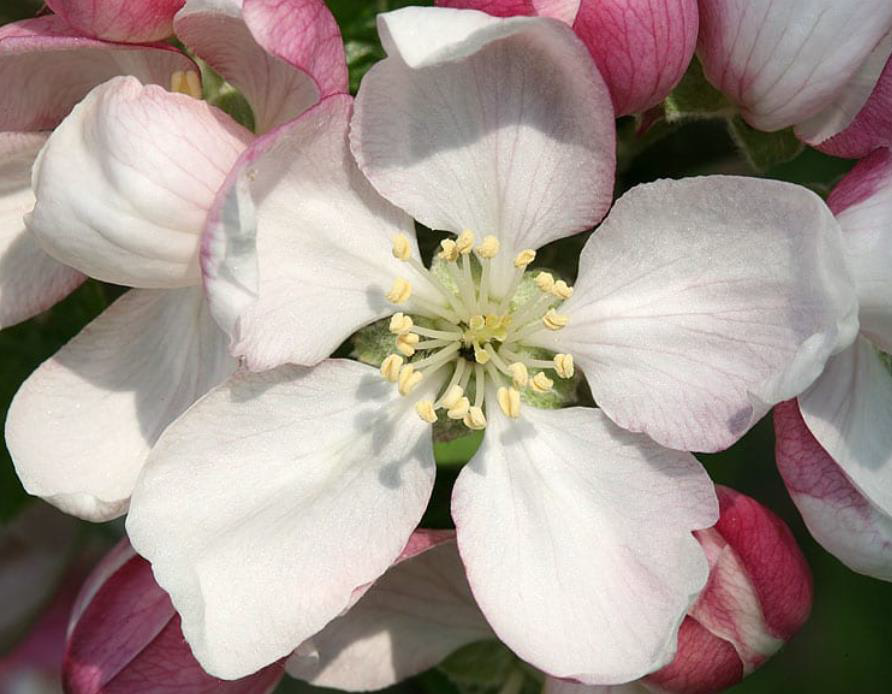

| Shadow tendency | Wholeness |
|---|---|
| Self-loathing | Self-love |
| Obsessive | Cleansed |
| ‘Contaminated’ | Purity |
| Extremely sensitive | Generous |
| Looks at all the details | One sees things in their proper perspective |
| Feels unclean and infected | A sense for the overall picture |
| May have the clean bug | Recognises unresolved issues and is able to transform them |
| Great inner desire for purity | Helps accept themselves |
| Egotistical behaviour towards others | Broadminded |
| Speak unkind words | Cleansing remedy |
| Self-condemnation for having done something that is not in own’s accord | Helps get rid of anything you do |
| Pedantic exactitude | Restores health |
| Everything has to be neat as a pin | Relax and enjoy life |
| Sometimes has problems with earthy gestures such as kissing, breast-feeding | |
| Anxiety from all forms of dirt | |
| Great need for cleanliness | |
| May do compulsive washing | |
| Little things may upset their composure | |
| Self-disgust | |
| May have said or done something in contrary to true nature | |
| Ashamed of physical condition and appearance | |
| Hates themselves | |
| Revolted by bodily functions and needs of the human body such as food, water | |
| Downward spiral | |
| Pessimistic | |
| Abundance of internal pressure | |
| Feel unacceptable | |
| Negative attitude towards themselves |
Origin and Specification of the Plant
Kingdom: Plantae
Family: Rosaceae
Genus: Malus
Species: M.sylvestris
Origin: Europe
Shade: White
Other names: European apple, Wild crab, Crab apple
Elements/Chemicals contained by the plant: Phloretin
Foliage: Deciduous
Height: 10m
Flowering season: Spring
Qualities and preferences: Moderately fertile soil, moist and well-drained soil, full sun or partial shade
Areas of Growth: Woods, hedgerows, shrubs
The bark of Malus sylvestris is smooth and greyish-brown when the tree is young, gradually developing shallow fissures and a more rugged texture as it matures. The branches are slender and often have a slightly drooping habit. During the spring, the tree is adorned with beautiful clusters of fragrant white or pink blossoms, which add a touch of elegance to its overall appearance.
The leaves of Malus sylvestris are oval-shaped, with a serrated edge and a glossy dark green colour. They are arranged alternately along the branches, creating a dense and lush canopy. In the autumn, these leaves transform into a vibrant array of colours, ranging from shades of yellow and orange to deep red, enhancing the tree's visual appeal.
One of the most distinguishing features of Malus sylvestris is its fruit. The crab apples are small, usually measuring around 2-4 cm in diameter. They are round or slightly flattened in shape and can vary in colour from green to yellow or red, depending on the cultivar. These fruits persist on the tree well into the winter, adding an element of interest and providing a valuable food source for wildlife.
The etymology of Malus Sylvestris stems from the Latin words "malus," meaning apple, and "sylvestris," meaning wild or woodland. This aptly reflects the tree's wild nature and its characteristic apple fruits. The common name, European crab apple, refers to the small size of the fruit and its resemblance to crab apples.
One of the most notable medicinal properties of Malus sylvestris is its anti-inflammatory effects. It contains various compounds such as flavonoids, triterpenoids, and polyphenols that help reduce inflammation in the body. This makes it useful in treating conditions such as arthritis, sore throat, and asthma. Malus sylvestris is also known to have digestive benefits. It has been used to treat diarrhoea, indigestion, and constipation due to its high fibre content. The plant contains pectin, a soluble fibre that helps promote bowel regularity, and malic acid, which aids in the digestion of fats and proteins. Moreover, Malus sylvestris is rich in antioxidants, which help protect the body against damage from free radicals. Free radicals
are unstable molecules that can cause cellular damage and lead to chronic diseases such as cancer, heart disease, and Alzheimer's. The antioxidants in Malus sylvestris, such as quercetin, catechin, and epicatechin, help neutralize these harmful molecules and prevent cellular damage. In addition to its anti-inflammatory, digestive, and antioxidant properties, Malus sylvestris has been shown to help regulate blood sugar levels and lower cholesterol. It contains compounds called procyanidins that can help improve insulin sensitivity and reduce blood glucose levels. It is also high in fibre, which can help lower cholesterol levels by binding to bile acids and excreting them from the body.
Specification of remedy
Emotional Group: Despondency or despair
Emotional response: Feeling unclean
Method of extraction: Sun
Crab apple relates to the sphere of order, purity and perfection. Dr Bach first prepared the Crab Apple remedy in the village of Brightwell-cum-Sotwell. We take this remedy when feel dirty or contaminated in some way. Taking the Crab apple remedy cleanses the negative energy in your body and helps you become more confident.


The images above show the Crab apple flower in a zoomed in aspect. The outer layer of the petals are slightly pink while the inner layers are white